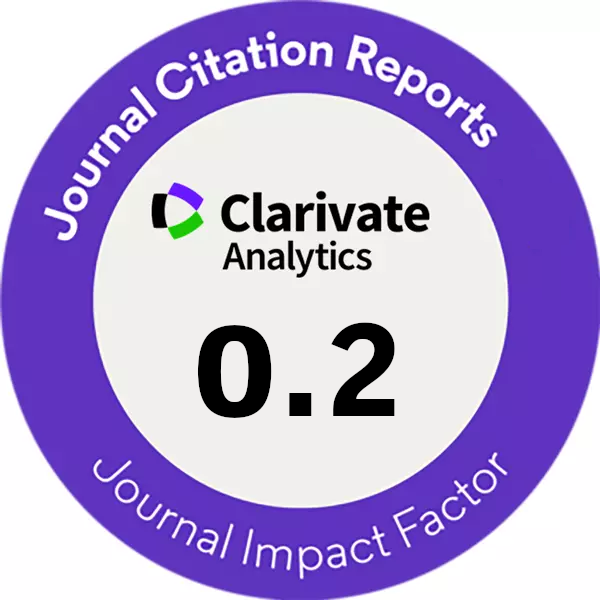Experimental study on dynamic elastic modulus of reinforced concrete bridge deck panels in salt-freeze environment
DOI:
https://doi.org/10.14311/CEJ.2024.04.0038Keywords:
Salt-frost, Freeze-thaw cycles, Dynamic elastic modulus, Bond stressAbstract
Reinforced concrete structures are the most widely used structural form today. In the western salt-alkali areas and in road and bridge engineering environments where de-icing agents are used in the northern regions, chloride ions penetrate the concrete, causing steel reinforcement to lose its passivation and corrode, resulting in durability damage to the reinforced concrete structure. Among all bridge components, the bridge deck panels of reinforced concrete bridges are most severely and directly affected by salt-frost damage. Predicting the service life under salt-frost conditions is an urgent issue to be addressed in the durability design, evaluation, and structural maintenance decision-making of reinforced concrete bridge deck panels. In this study, 15 beam specimens and 75 steel reinforcements were subjected to freeze-thaw tests, and 300 freeze-thaw cycles were performed on the concrete beam specimens to analyze the variation of their dynamic elastic modulus. Freeze-thaw tests were conducted on the steel reinforcement specimens with freeze-thaw cycles of 50 times, 100 times, and 150 times. After the freeze-thaw tests, pull-out tests were conducted to measure the changes in bond strength between the steel reinforcement and concrete, relative slip between the steel reinforcement and concrete, and other data.
Downloads
References
Wang R, Hu Z, Li Y, et al. Review on the deterioration and approaches to enhance the durability of concrete in the freeze–thaw environment[J]. Construction and Building Materials, 2022, 321: 126371.
Wang R, Zhang Q, Li Y. Deterioration of concrete under the coupling effects of freeze–thaw cycles and other actions: A review[J]. Construction and Building Materials, 2022, 319: 126045.
Zhang P, Wittmann F H, Vogel M, et al. Influence of freeze-thaw cycles on capillary absorption and chloride penetration into concrete[J]. Cement and Concrete Research, 2017, 100: 60-67.
Bogas J A, De Brito J, Ramos D. Freeze–thaw resistance of concrete produced with fine recycled concrete aggregates[J]. Journal of Cleaner Production, 2016, 115: 294-306.
Sun W, Mu R, Luo X, et al. Effect of chloride salt, freeze–thaw cycling and externally applied load on the performance of the concrete[J]. Cement and Concrete Research, 2002, 32(12): 1859-1864.
Molero M, Aparicio S, Al-Assadi G, et al. Evaluation of freeze–thaw damage in concrete by ultrasonic imaging[J]. Ndt & E International, 2012, 52: 86-94.
Tikalsky P J, Pospisil J, MacDonald W. A method for assessment of the freeze–thaw resistance of preformed foam cellular concrete[J]. Cement and concrete research, 2004, 34(5): 889-893.
Tikalsky P J, Pospisil J, MacDonald W. A method for assessment of the freeze–thaw resistance of preformed foam cellular concrete[J]. Cement and concrete research, 2004, 34(5): 889-893.
Lu Z, Feng Z, Yao D, et al. Freeze-thaw resistance of Ultra-High performance concrete: Dependence on concrete composition[J]. Construction and Building Materials, 2021, 293: 123523.
Richardson A E, Coventry K A, Ward G. Freeze/thaw protection of concrete with optimum rubber crumb content[J]. Journal of Cleaner Production, 2012, 23(1): 96-103.
Taheri B M, Ramezanianpour A M, Sabokpa S, et al. Experimental evaluation of freeze-thaw durability of pervious concrete[J]. Journal of building engineering, 2021, 33: 101617.
Qin X, Meng S, Cao D, et al. Evaluation of freeze-thaw damage on concrete material and prestressed concrete specimens[J]. Construction and Building Materials, 2016, 125: 892-904.
Jiang W, Shen X, Xia J, et al. A numerical study on chloride diffusion in freeze-thaw affected concrete[J]. Construction and Building Materials, 2018, 179: 553-565.
Zahedi A, Komar A, Sanchez L F M, et al. Global assessment of concrete specimens subjected to freeze-thaw damage[J]. Cement and Concrete Composites, 2022, 133: 104716.
Jiang L, Niu D, Yuan L, et al. Durability of concrete under sulfate attack exposed to freeze–thaw cycles[J]. Cold Regions Science and Technology, 2015, 112: 112-117.
Richardson A, Coventry K, Bacon J. Freeze/thaw durability of concrete with recycled demolition aggregate compared to virgin aggregate concrete[J]. Journal of Cleaner Production, 2011, 19(2-3): 272-277.
Downloads
Published
Issue
Section
License
Copyright (c) 2024 Author

This work is licensed under a Creative Commons Attribution-NonCommercial 4.0 International License.
Authors who publish with this journal agree to the following terms:
- Authors retain copyright and grant the journal right of first publication with the work simultaneously licensed under a Creative Commons Attribution License that allows others to share the work with an acknowledgement of the work's authorship and initial publication in this journal.
- Authors are able to enter into separate, additional contractual arrangements for the non-exclusive distribution of the journal's published version of the work (e.g., post it to an institutional repository or publish it in a book), with an acknowledgement of its initial publication in this journal.
- Authors are permitted and encouraged to post their work online (e.g., in institutional repositories or on their website) prior to and during the submission process, as it can lead to productive exchanges, as well as earlier and greater citation of published work (See The Effect of Open Access).










